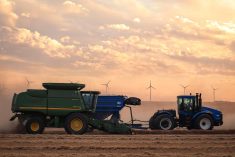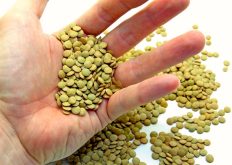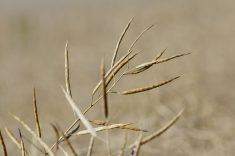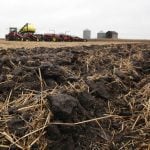Glacier FarmMedia — Fababean is a crop brimming with potential but struggling to establish a foothold in Canada, says an industry official.
Annual production of the crop appears to be stalled in the 80,000 to 100,000 tonne range.
“There’s a ton more productive capacity in Canada for fababeans,” said Denis Tremorin, director of sustainability with Pulse Canada.
“We’re just scratching the surface.”
Yields are comparable to or better than peas, but the economics just are not there yet for broad adoption of the crop.
Read Also

Prairie Wheat Weekly: Most Western Canadian bids higher
Western Canadian wheat prices were higher on Oct. 16, 2025 compared to the past week.
“The challenge today is the price being offered to producers isn’t attractive,” he said during a recent webinar.
It is simply not competitive with the canola and high-yielding cereals grown in the northern Prairie region.
The hope is that prices will improve as the market expands beyond the feed sector and into food processing and export markets.
Emerging food ingredient
Tanya Der, director of diversification and market insights with Pulse Canada, said there are some encouraging signs on that front.
“It’s clear that fababeans are an emerging food ingredient,” she said.
Fababean protein products in particular have “taken off” with about 300 new product launches globally in 2024, up from nothing 10 years ago.
There are also a growing number of paste, flour and whole seed products.
Europe leads the way with 1,373 new launches with faba ingredients between 2020 and 2024, followed by Asia Pacific with 1,213. North America had 372.
The top category was snacks with 638 new launches, followed by prepared meals with 598 and processed meats with 426.
“Fabas are a new ingredient, but they have quite a diversified application,” said Der.
Agronomically suited to the Prairies
Tremorin said the crop is agronomically suited to the northern Prairie region, thriving in cooler, subhumid conditions.
Fababeans prefer wetter soils and are not susceptible to Aphanomyces root rot. It is also not particularly susceptible to fungal pathogens.
The crop is a strong nitrogen-fixer and works well in rotations with canola and cereals.
However, it is a crop that takes longer to mature and is therefore at risk to late-season frosts.
“It’s not extreme,” said Tremorin.
“It’s not like you’re trying to grow corn in the northern Prairies.”
Fababeans require more moisture to grow than peas and lentils, so a late-summer drought can really hurt yields.
It has a larger seed size, which makes it more costly to plant and can cause plugging in seeders.
There are also limited herbicide options compared to other crops.
Canada a small trade player
Canada is a small player in both production and exports of the crop. China and Egypt both produce more than one million tonnes annually, while Australia dominates with about 650,000 tonnes of annual exports.
Egypt is by far the world’s largest importer, buying over 700,000 tonnes per year.
Tremorin said Canada has a leg up on other exporters because Pulse Canada has produced a life cycle assessment report detailing the crop’s low environmental impact, complete with farm-level data sets.
The organization can also show how peas and lentils can reduce greenhouse gas emissions when incorporated into food formulations, pet foods and swine feed. It hopes to utilize the same approach with fababeans.
And Pulse Canada has produced a comprehensive feed ingredient guide that covers information like the crop’s nutritional attributes and typical inclusion rates.













